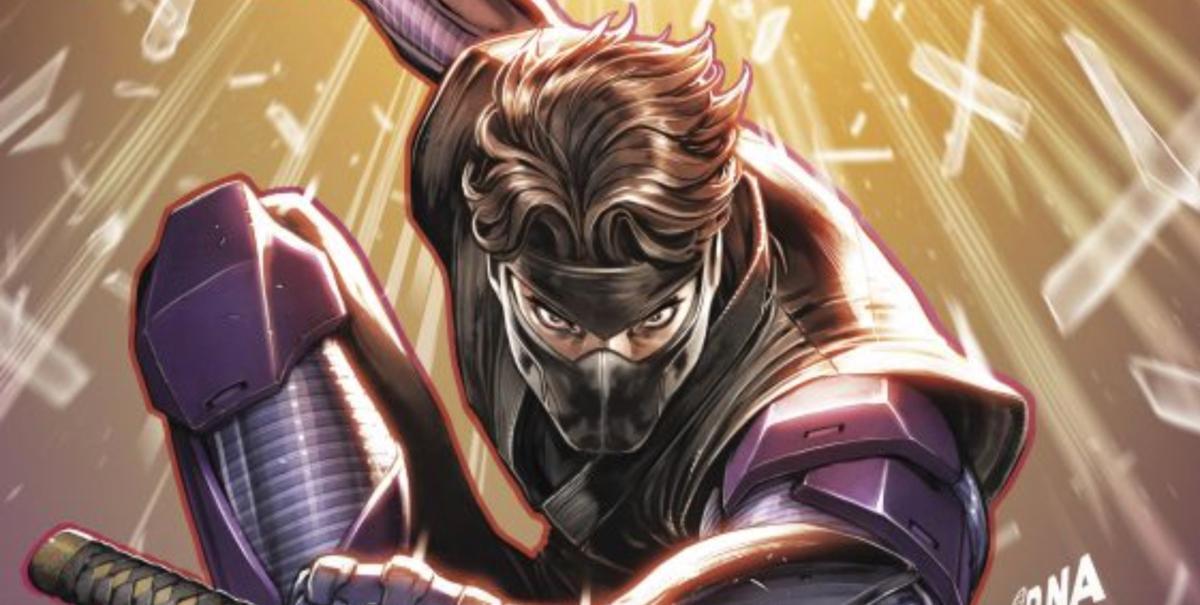I have exactly one criticism of Ninjak #1 and it’s the inclusion of an all too familiar MacGuffin in the spy genre: A complete catalog of an entire agency’s (in this case MI-6’s) undercover operatives. That object, hidden or revealed, poses tremendous threats to any clandestine ecosystem and provides an inciting incident capable of providing endless drama and chaos for a spy story. That’s exactly what it does in Ninjak #1 and what follows is an absolute thrill—it only distinguishes itself as overplayed because everything else on these pages feels so compelling by comparison.
Videos by ComicBook.com
That’s a hiccup most readers are unlikely to ever encounter unless they’ve also soaked their brains in decades of action-oriented genre fare. Instead, from the very first page artist Javier Pulido and writer Jeff Parker deliver readers into a fast-paced world of spycraft in which superpowers are just one more threat in a very complex game. Throughout the early sequences they reintroduce the character Ninjak with minimal exposition—providing every detail a newcomer could desire in a focused approach.
As readers pick up on Ninjak’s intense childhood training, elite assassin’s reputation, and long history with British secret intelligence, they are also introduced to how this story will be told. Spycraft is an essential ingredient, but there’s no space for inquisitions and delicate trickery; this is a comic book told on the page, not in narrative captions. Even the prologue, featuring a covert pub meeting without a single drop of blood spilled, is a thriller through Pulido’s eyes. All four of the characters in the pub are instantly recognizable: two stodgy, experienced British agents and two extravagantly dangerous pieces of eurotrash. These designs persist and make every first appearance an effective introduction, making it much easier to build narrative momentum.

The first few pages are stunning, but the violent sequence that follows is what elevates Ninjak from a stylish update to a must-read masterclass in action comics. Ninjak is introduced in an arrangement aping the murder of journalist Jamal Khashoggi by Saudi officials at their consulate in Istanbul. Things occur differently within Valiant comics, of course, as Ninjak is able to turn the saw blade that would dismember Khashoggi against his many attackers in a stunning sequence. It’s an effective revenge fantasy whether or not readers can see how closely it hews to real events. The atrocities perpetrated against Khashoggi instantly identify all of his assailants as bona fide villains.
Those state-sanctioned murderers, forming a mob around Ninjak‘s eponymous hero, fall in memorable fashion. Even as Pulido embeds tricolor flashbacks to Ninjak’s origin, each panel framed in the present ratchets up the tension or offers a bloody twist. The minimal color palette leaves blood in black ink and prevents the proceedings from being overwhelmed by gore. However, there’s no denying the violence on the page as buzzsaws, swords, machine guns, and garrotes whip through the panels. Many deaths remain just outside of panels and compel readers to “see” more of what is happening. This sequence offers a masterful balancing act in selecting which specific images can show readers an entire scene.
That same style and sense of storytelling follows through the rest of the issue as consequences pour down upon MI-6 agents and Ninjak’s course is set. Assassinations taking an entire page or a single panel are similarly impressive. What’s best, however, is returning to the text for a second and third reading allowing the dialogue on the page to drop away. Knowing the details it’s difficult to resist simply following the story, especially when Ninjak is turning the table on anti-democratic thugs. The reading experience is effortless, even if crafting it was anything but.
Published by Valiant Entertainment
On July 14, 2021
Written by Jeff Parker
Art by Javier Pulido
Colors by Javier Pulido
Letters by Dave Sharpe with Javier Pulido
Cover by David Nakayama








